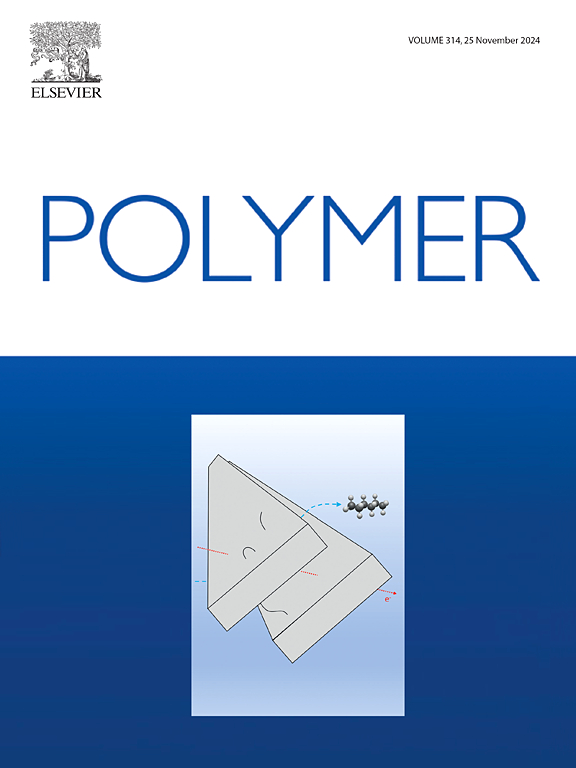Dual dynamic bonds enable biocompatible polyurethane hydrogels with superior toughness, fatigue and puncture resistance, pH-reversibility, and room-temperature self-healability
IF 4.1
2区 化学
Q2 POLYMER SCIENCE
引用次数: 0
Abstract
Intelligent hydrogels with remarkable mechanical properties and biocompatibility have significant potential in biomedical applications. However, preparing such hydrogels often involves a complex synthesis process, presenting a considerable challenge. This study developed a new polyurethane hydrogel (NPUG) using a simple pre-polymerization and solvent-exchange strategy through the synergistic combination of covalent acylhydrazone bond and noncovalent H-bond crosslinking. Due to the dual-crosslinked structures, the fabricated NPUG hydrogels possessed commendable tensile and compressive properties, with NPUG−III exhibiting tensile stress of 95.1 kPa, tensile elongation of 686.0 %, fracture toughness of 336.0 kJ m−3, and compressive stress of 214.0 kPa (under 90 % compressive deformation). Meanwhile, the NPUG hydrogels displayed exceptional fatigue resistance, shape-recovery capacities, and puncture resistance as evidenced by cyclic tensile, cyclic compression, and puncture testing. The dual dynamic reversible bonds conferred the hydrogels with high self-healing efficiency (up to 97.5 % after autogenous healing at room temperature for 2.0 h) and repeated pH-responsive gel−sol transition capacities. Furthermore, cytotoxicity evaluations (cell viability >90 %) and hemolysis tests (hemolysis ratio <3.5 %) confirmed the excellent biocompatibility of the hydrogels. Hence, the dual dynamically crosslinked hydrogels, characterized by their high toughness, fatigue resistance, puncture resistance, pH-reversibility, room-temperature self-healing, and biocompatibility, represent promising candidates for various bioengineering applications.


求助全文
约1分钟内获得全文
求助全文
来源期刊

Polymer
化学-高分子科学
CiteScore
7.90
自引率
8.70%
发文量
959
审稿时长
32 days
期刊介绍:
Polymer is an interdisciplinary journal dedicated to publishing innovative and significant advances in Polymer Physics, Chemistry and Technology. We welcome submissions on polymer hybrids, nanocomposites, characterisation and self-assembly. Polymer also publishes work on the technological application of polymers in energy and optoelectronics.
The main scope is covered but not limited to the following core areas:
Polymer Materials
Nanocomposites and hybrid nanomaterials
Polymer blends, films, fibres, networks and porous materials
Physical Characterization
Characterisation, modelling and simulation* of molecular and materials properties in bulk, solution, and thin films
Polymer Engineering
Advanced multiscale processing methods
Polymer Synthesis, Modification and Self-assembly
Including designer polymer architectures, mechanisms and kinetics, and supramolecular polymerization
Technological Applications
Polymers for energy generation and storage
Polymer membranes for separation technology
Polymers for opto- and microelectronics.
 求助内容:
求助内容: 应助结果提醒方式:
应助结果提醒方式:


